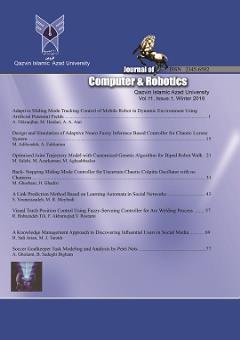A Survey of Fake News: definition, features, detection approaches, crisis management process and open research issues
محورهای موضوعی : Journal of Computer & Robotics
1 - ITRC
کلید واژه: fake news detection, fake news features, crisis management, dataset, social media,
چکیده مقاله :
Today, people often use social media as a popular tool to know or share news due to its fast dissemination of information, low cost, and easy access. However, since there are no specific rules and framework for publishing news in these media, the quality and accuracy of the content of this news is lower than the news published in the traditional news sources. Spread of false information among the people can cause irreversible damage to organizations, governments, companies and even individuals; therefore, addressing fake news has become an emerging issue, and large companies in the world, such as Google, are looking for practical solutions to validate content and detect fake news. But due to the dynamic nature of social media as well as the complexity and diversity of available data, fake news detection remains a challenging issue. This survey reviews and discuss the approaches that can detect fake news from five perspectives: (1) learning method, (2) detection method, (3) learning approach, (4) implementation model and (5) independencies from language, field and platform. This survey also presents the state-of-the-art crisis management process in fake news age and proposed actions for each steps too. The result of this study shows despite the many studies have been conducted in recent years in the field of fake news, there is still a long way to reach an effective and efficient system for fake news detection, so in this survey we highlight some of open issues for future research directions. We hope this survey can facilitate collaborative efforts among experts in computer and information sciences, social sciences, management science, and journalism to research fake news, where such efforts can lead to fake news detection that is not only efficient but more importantly, explainable.
Today, people often use social media as a popular tool to know or share news due to its fast dissemination of information, low cost, and easy access. However, since there are no specific rules and framework for publishing news in these media, the quality and accuracy of the content of this news is lower than the news published in the traditional news sources. Spread of false information among the people can cause irreversible damage to organizations, governments, companies and even individuals; therefore, addressing fake news has become an emerging issue, and large companies in the world, such as Google, are looking for practical solutions to validate content and detect fake news. But due to the dynamic nature of social media as well as the complexity and diversity of available data, fake news detection remains a challenging issue. This survey reviews and discuss the approaches that can detect fake news from five perspectives: (1) learning method, (2) detection method, (3) learning approach, (4) implementation model and (5) independencies from language, field and platform. This survey also presents the state-of-the-art crisis management process in fake news age and proposed actions for each steps too. The result of this study shows despite the many studies have been conducted in recent years in the field of fake news, there is still a long way to reach an effective and efficient system for fake news detection, so in this survey we highlight some of open issues for future research directions. We hope this survey can facilitate collaborative efforts among experts in computer and information sciences, social sciences, management science, and journalism to research fake news, where such efforts can lead to fake news detection that is not only efficient but more importantly, explainable.


